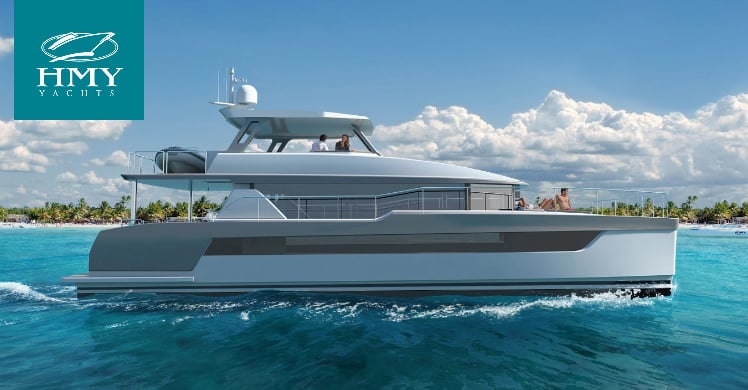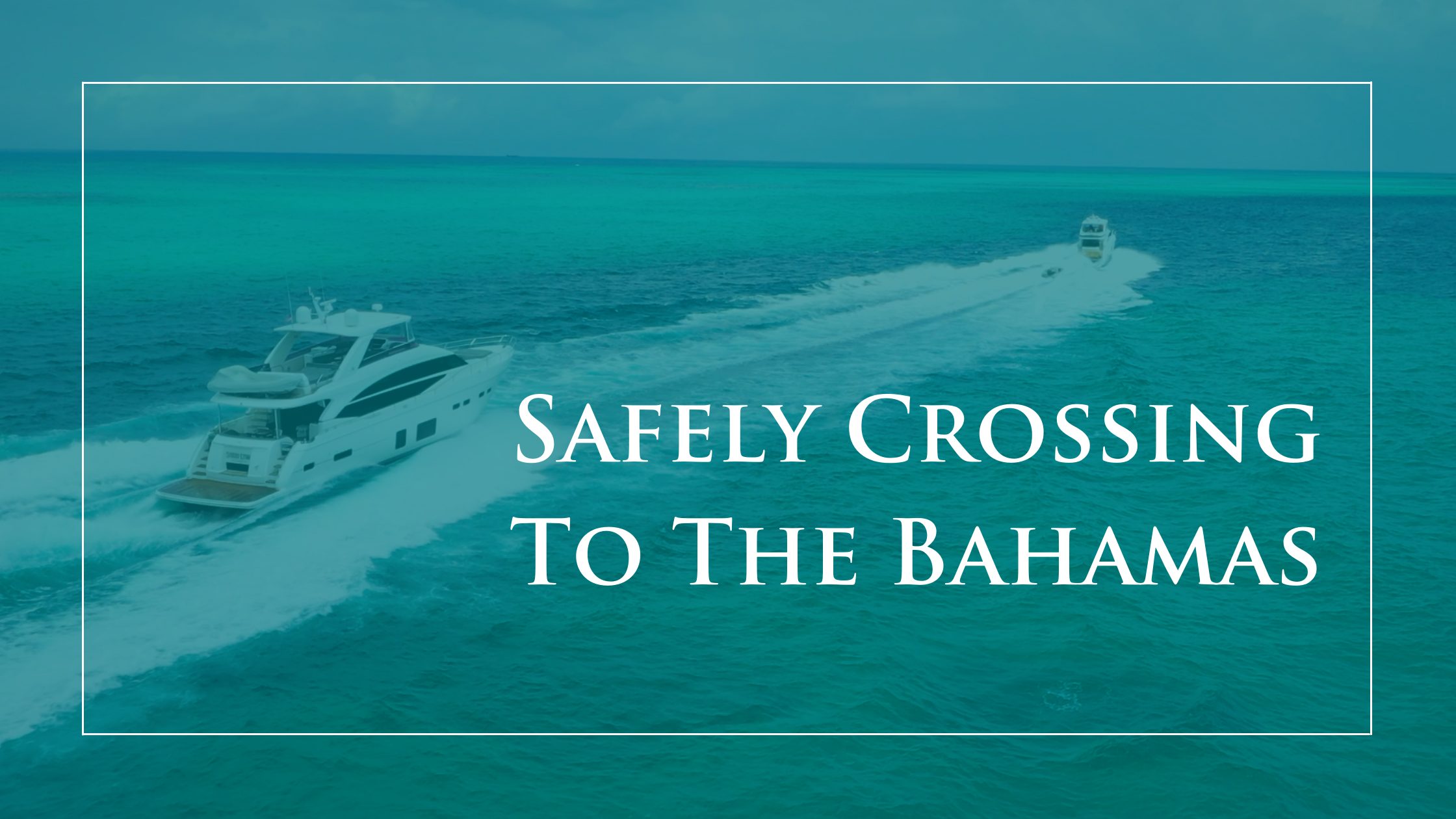
How to Prepare for a Safe and Successful Crossing to the Bahamas
The Bahamas is a premier destination for yacht owners looking to relax and enjoy an exquisitely beautiful natural environment. But even the most luxurious boating trip has the potential to present its own obstacles. If you’re thinking about making the trip to the Bahamas, here’s a closer look at what you need to consider when planning your trip, including paperwork and supply preparation, and what to expect for the journey there and back, so that you can indulge in all the splendor the Bahamas has to offer!
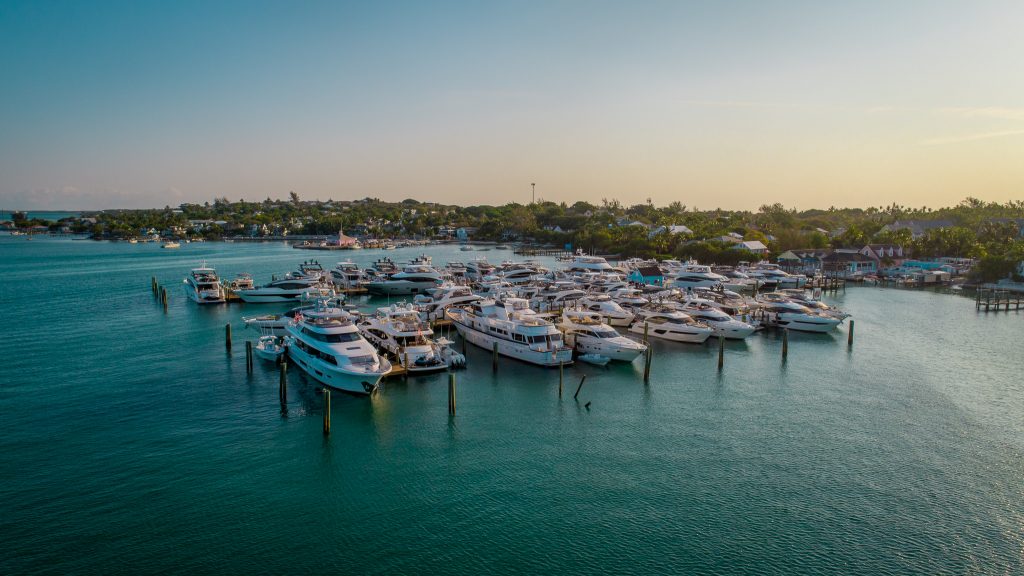
Preparing for your Trip - Supplies and Documents
These will be necessary upon arriving in the Bahamas:
- Passport — A standard consideration whenever you’re traveling internationally. Make sure everyone’s documentation is up to date months in advance, to ensure a smooth entry.
- Yellow Quarantine Flag — When raised upon entering Bahamian waters, this flag shows that you have yet to check in with Customs. You don’t need to purchase this from a specific vendor, so long as you are flying a clearly visible, yellow flag.
- Bahamas Courtesy Flag — After Customs has accepted your documentation, you’ll be asked to fly a Bahamas Courtesy Flag to signify your acceptance to explore.
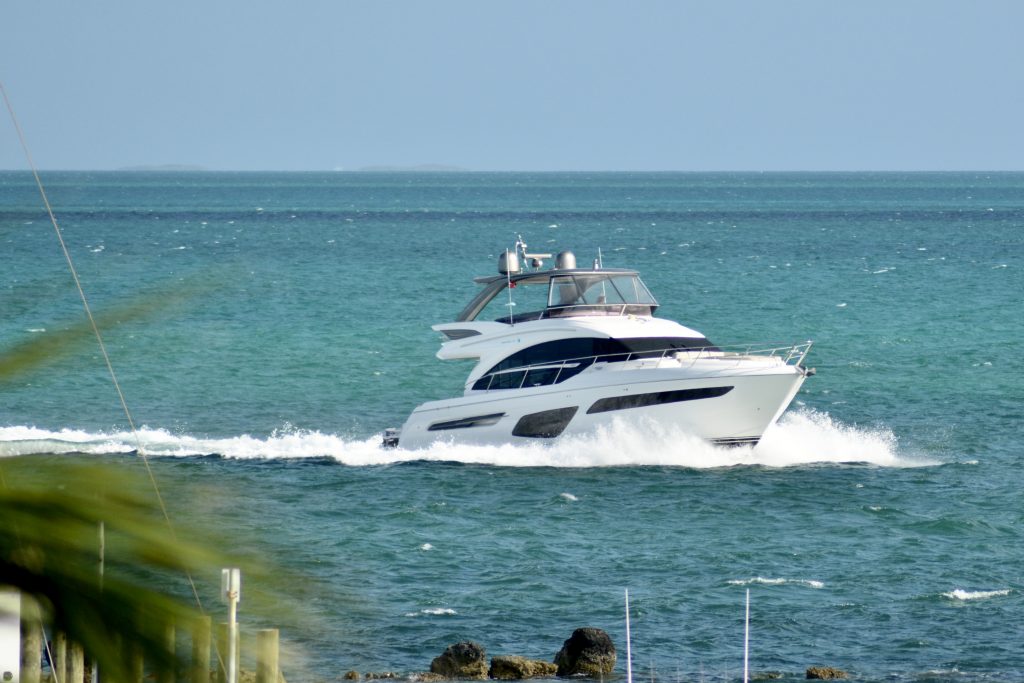
COVID & Health Guidelines
No matter your vaccination status, current Bahamian protocol requires you and any other guests on the trip to provide a negative COVID-19 test three days prior to your arrival. As COVID guidelines continue to evolve across the globe, continuously check the Bahamian government site for the most current updates. A Bahamas Travel Health Visa is the next crucial element for your trip. The Bahamas Travel Health website will guide you through the straightforward process, including sharing details regarding your excursion. Make sure everyone on board has a printed copy, as well. When you arrive, only the captain will exit the ship to provide all necessary paperwork and discuss it with customs. After you’ve been approved, everyone will be allowed to roam freely.
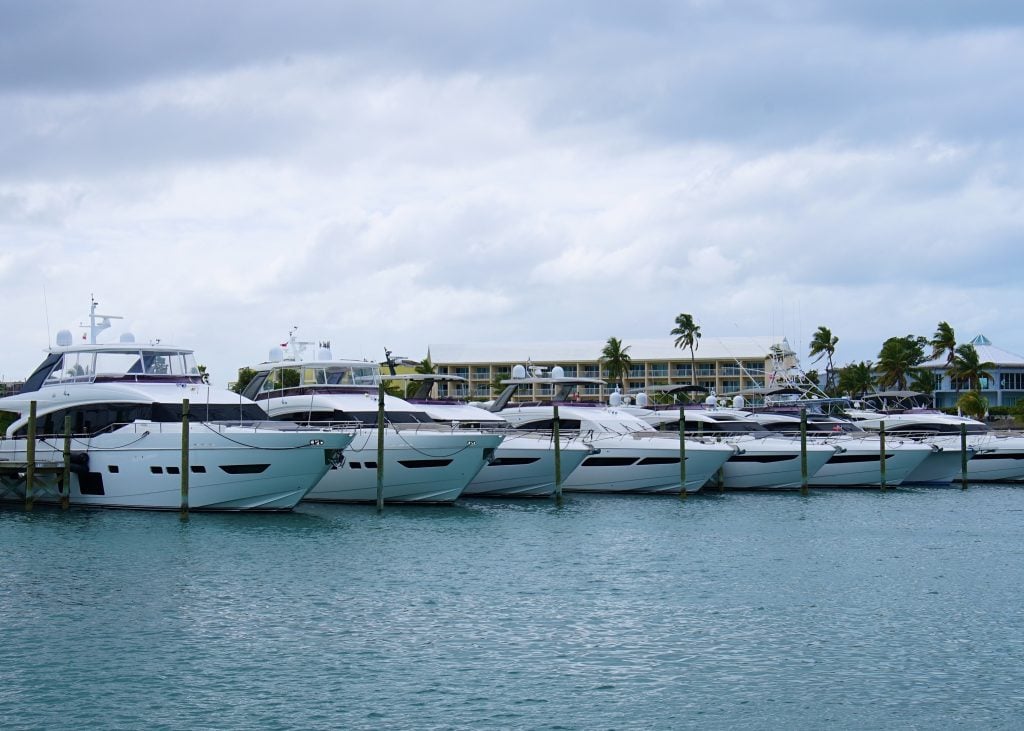
Weather Considerations Even though you’ll be planning your trip well in advance, you’ll want to monitor weather conditions right up until you finally depart. It’s essential that you and your crew understand the weather conditions when you leave, as thunderstorms can develop rapidly and create dangerous conditions, posing serious risks on the open water. Experienced Bahamas travelers highly recommend a marine and tropical-specific weather tracker, such as Marv’s Weather Service, for accurate tropical weather forecasts for your trip, to give you a better understanding of what to expect.
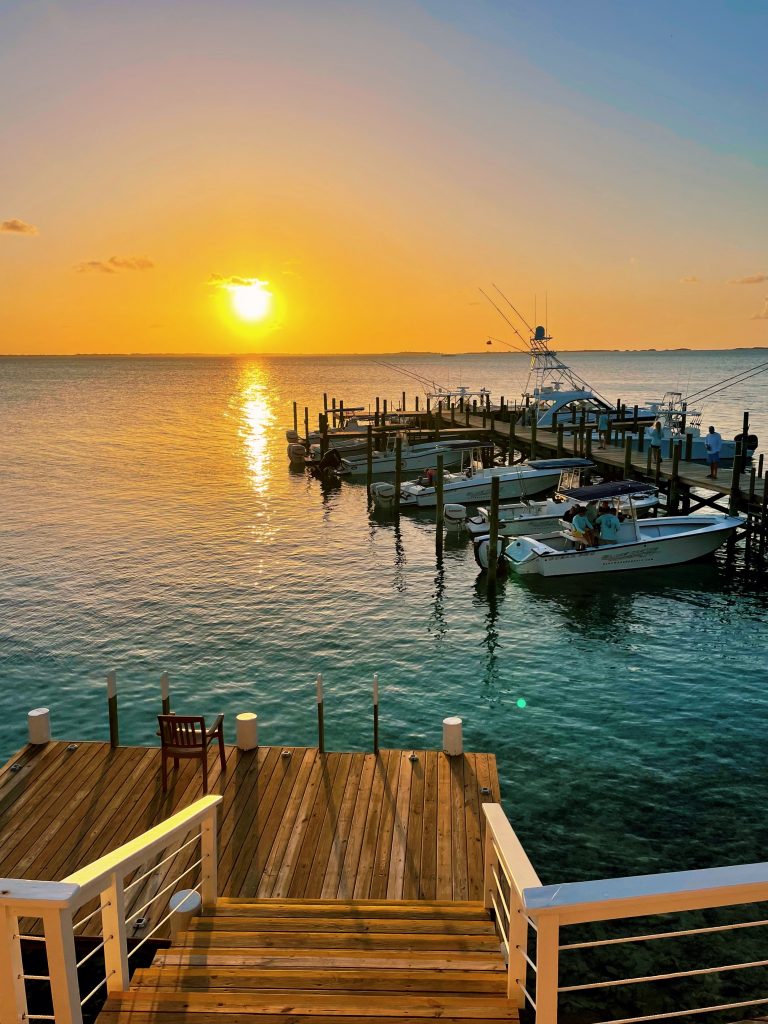
Maintaining a successful Journey Before any trip, it’s important to thoroughly inspect your vessel. For this crossing it is particularly important, as the combination of open ocean and the powerful Gulf Stream current can and will exploit any faults. Once everything on board passes muster, prepare for the crossing by packing lightly — but smartly. Any excess weight will negatively impact handling, and decrease performance and fuel efficiency. This may prove trickier than it sounds, as not all supplies are readily accessible in the Bahamas, and fuel isn’t available on every island. Be strategic in your choices, and look to us for any further advice. As cell phone service will not be available once you get far enough offshore, you’ll also need a few extra items to include on your safety checklist:
- A VHF radio with a long-range antenna — Your boat may already come with this installed, but it wouldn’t hurt to have an extra handheld device in case you need to communicate with the Coast Guard or other vessels in an emergency.
- Signaling devices — the Coast Guard advises equipping a horn, PA system, or even a whistle that can help signal others in case of emergency. Flares and other means to draw attention to your boat are advised as well.
- Emergency Position-Indicating Radio Beacon (EPIRB) or Personal Locator Beacon (PLB) — Though it may feel excessive, you can never be too prepared at sea. These devices notify search and rescue teams, no matter where you are.
- Life jackets and other safety measures — Standard measures like life jackets and fire extinguishers will probably always remain on your vessels, but it’s still important to confirm their presence and good-working condition.
Finally, an up-to-date chart plotter can help you map out your route. Having traditional paper charts and a compass on hand are great options as well.
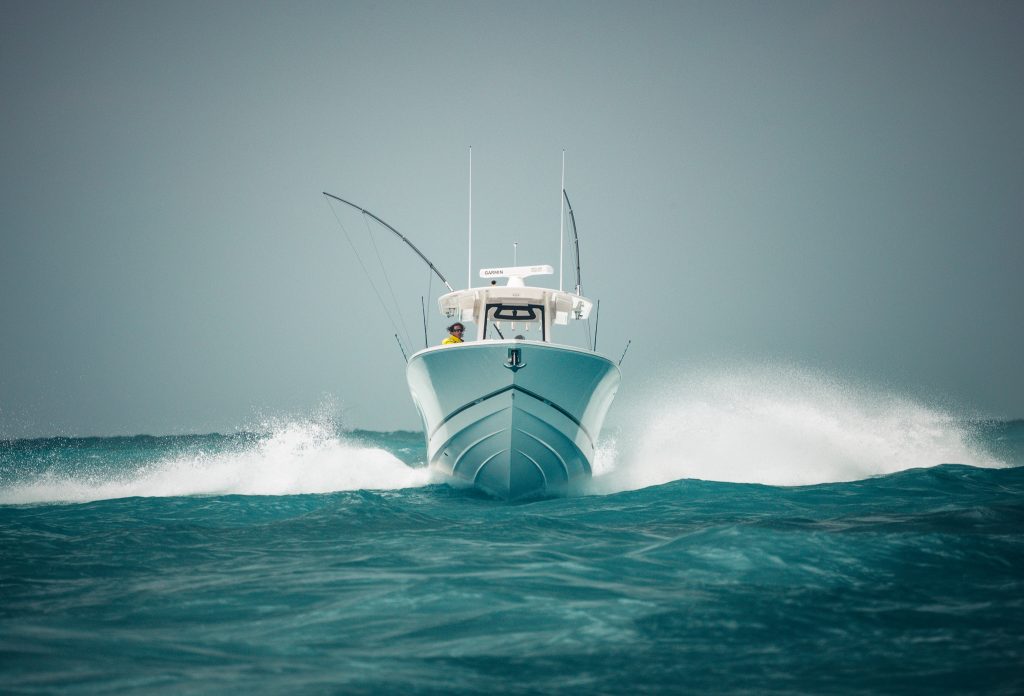
Returning Home Upon your trip back, U.S. Customs will also require a Customs Border Protection Declaration form, payment of any necessary duties, and will inspect and possibly interview everyone on board. Download the CBP Roam App on your device before departure to easily report your return and be approved or receive information on your next steps. Your Bahamas trip will be a timeless memory for you and your guests. To ensure you have a yacht that is equally as valuable as your memories, start your search today at HMY Yachts.

